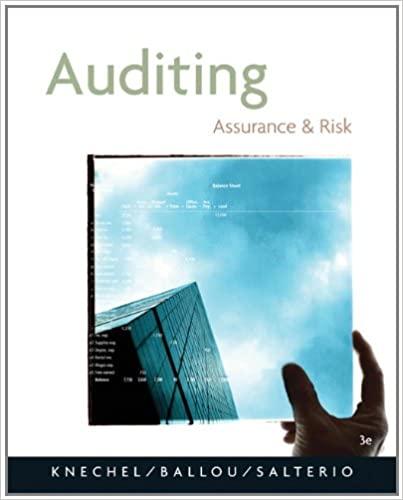Although the use of heuristics may lead to biased audit decisions in some cases, all humans make
Question:
Although the use of heuristics may lead to biased audit decisions in some cases, all humans make use of them. However, it is important to recognize when an auditor is employing a heuristic so that he or she can be cognizant of the biases and can minimize their effect on decision making.
For each of the following situations in which an auditor's decision making may be affected by a bias, (1) identify the heuristic (if any) employed and the bias that results, (2) describe the resulting implications for the audit, and (3) suggest a technique to rectify the bias.
a. An auditor spends an inordinate amount of time looking for management fraud on an engagement, even though the incidence of management fraud is actually quite low for this type of client.
b. Believing that the sales order/receivables process is well controlled, an auditor disregards evidence from his sample that the process is not well controlled.
c. Having just finished an engagement characterized by numerous material inventory misstatements, an auditor pays unwarranted attention to that account on the current engagement.
d. An auditor believes that the presence of errors in the receivables and the inventory is more probable than finding an error in just the inventory.
e. When conducting attribute sampling for the tests of controls over payables, the auditor sets an initial expectation of error of 3 percent (last year's actual error rate), even though that process saw a great deal of turnover since last year's audit.
f. When deciding the initial expectation of error for an attribute sample for a test of controls over payroll, the auditor sets a rate higher than last year's actual error rate because that rate exceeded the expectation.
g. The auditor argues for higher accruals of pension expense based on the executive bonuses given out the previous year in which the company saw unexpectedly large sales and profit increases.
h. In deciding where to set the control risk for the sales order process, the auditor relies on a sample of just 30 of the 10,000 transactions the client recorded for the period.
Step by Step Answer:

Auditing Assurance And Risk
ISBN: 9780324313185
3rd Edition
Authors: W. Robert Knechel, Steve Salterio, Brian Ballou





